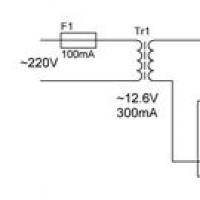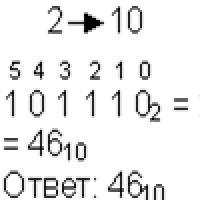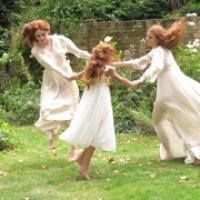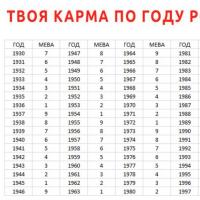Subtraction 16. Addition. Subtraction (16 hours). Problem solving. Improving computing
Topic: Subtraction type 16 -
Goals: draw up subtraction tables for cases of the form 16-- and carry out work aimed at memorizing them
develop the ability to solve compound problems. develop thinking, speech, cognitive interests,
Cultivate interest in the subject, cultivate love and respect for nature
Planned results: students will learn to subtract numbers by passing through ten within 20; use terminology when composing and reading mathematical equations; solve and model compound problems using diagrams; perform tasks of a creative and exploratory nature; monitor and evaluate your work and its results.
Methods: verbal, partially search, explanatory and illustrative
Equipment: cards with tasks for work, subtraction algorithm, circles for reflection, pictures of animals
During the classes
Class organization
So the bell rang.
The lesson begins.
You sit down very quietly.
And don’t be lazy to work.
-May the lesson bring us the joy of communication.
Today, guys, we have an unusual lesson - a lesson-excursion. And where we will go, you will find out if you solve the examples.
5+6= .. p 7+7=..o 8+8=…w
6+7 = .. o 13-5 =…p 12-3=….a
Zoo is a wildlife museum where you can get acquainted with representatives of the animal world of our planet.
Calligraphy minute
So, let's start our lesson. Let's open the notebooks and write down the number, great job
Wild animals invite us to visit them. But to enter them, you need to buy tickets.
Let's get tickets. Tickets for schoolchildren cost 6 des. 1 tenge units.
How long will it be? (61)
How many children want to visit the zoo, find out by guessing the number in which 1 ten is 6 units (16)
Let's write this number
What number is this?) (two digits)
Name the neighbors of this number. 15, 16
2.Updating knowledge
The bird greets us firstflaming Fr. Let's pass by him. After completing the math dictation, we will learn about this bird.
Mathematical dictation (1 student on the board)
1) Write down the number in which 2 dec. 5 units. 25
2) Write the difference between the numbers 40 and 10 40
3) 1 term 30, 2 term 20 What is the value of the sum-? 50
4) Increase 10 by 5 15
5) 12 minus 8 4
6) the number 10 was added to the number 90
7) write down the number following the number 6 7
-Let's check.
What do these numbers say?
(story about flamingo, tiger)
Flamingos live 25-30 years. At the end of the 50s, there were about 50 thousand flamingos in Kazakhstan. and at present there are no more than 15 thousand of them there. . These birds weigh 4 kg.
In the family of wild cats, the tiger is the largest animal. Its body is up to 4 meters long. Daily income up to 30 km. Tigers do not form permanent pairs. A tigress carries her cubs for 100 days. She gives birth to 2-4 cubs. The cubs open their eyes on the 7th day. They live 25-30 years. In 1947, hunting for tigers was banned in our country, and capture for the zoo is allowed only with special permission.
4.New theme
It’s not so easy to quietly pass by a resting animal. But we completed the task.
A tiger lives in the next enclosure. The tiger ruined all the examples and erased the answers
Let's solve them together. (he indicates the topic of lesson 16 -)
Self-determination for activity.
Who guessed what our theme would sound like? 1 6 - *
-What should we learn?
Right! How many ways of subtraction do you know?
What knowledge do we need for method 1?
(composition of number 16, addition table)
What knowledge do we need for method 2?
(subtraction by parts)
(learning new material)
We work according to the algorithm (on the board standard 16 - subtract in parts)
Who wants to help me?
A note appears on the board
16 -8 =8 1 6 – 6 – 2 =
Well done!
5. Setting to memorize
- Guys, let's read our expressions in chorus
This you must remember.
6. Consolidation of what has been learned
- What should be our next step in the lesson? (repetition)
- Why do we need this?
Where can we use this?
Physical education
Guys at the zoo, there is also a lake with waterfowl. They swim quietly and rest. Let us also have a little rest with them.
Beautiful cranes, cranes flying
And they sat down on the water.
We sat down, sat, and flew again
The cranes are flying, flapping their wings,
Bent over the water, shaking their heads
They know how to stand straight and proud
They land on the water very silently.
Working on the material covered.
Working on a task
1) There were 6 cranes sitting on the shore of the lake. And 2 more cranes were swimming in the lake. How many cranes are there in total in the zoo?
Name the problem condition
What words do we use for short notes?
Read the question of the problem.
What do you need to know to answer the problem question?
A number of cranes on the shore and a number of cranes in the lake.
1) 6+2 -8 (in the lake)
There are 14 species of cranes in the world. These birds are endangered.
2) By solving the equations, we can learn interesting things about lions
X+9=16 x- 8 =8
X=7 x =16
A lion's claws can reach 7 centimeters in length.
The average life expectancy of lions is 16 years. But in captivity they usually do not live longer than 11 years.
3) Independent work. The argali live in the next enclosure. He has prepared tasks for us to do independently.
What is the next stage of work in the lesson?
Why do you need independent work? What will she give us?
Choose a task within your capabilities. Work.
Level 1
Level 2
Level 3
10.Checking independent work
- Who chose 1 column? Stand up.
Who chose column 2? Stand up
Comparison with classmates' solutions.
What our friends at the zoo are calling for
Why is it necessary to protect nature?
Don't pollute the water!
Don't hurt animals!
Do not litter nature! After all, nature is our common home! Man is in his hands, which means the beauty and riches of our native Earth are in our hands. Remember this!
Homework
11.Reflection
- What did you learn in the lesson?
Where will this be useful to you?
What tasks did you like? Why?
Which ones didn't you like? Why?
I'm happy with my job
Worked well, but there were errors
I need help
12. Lesson summary Thanks everyone for the lesson.
| 5+6= .. p 7+7=.. o 8+8=… s If you arrange the numbers in descending order, you will find out where we are going today | 5+6= .. p 7+7=.. o 8+8=… s 6+7 = .. o 13-5 =… p 12-3=…. A If you arrange the numbers in descending order, you will find out where we are going today |
||||||||||||||
| 5+6= .. p 7+7=.. o 8+8=… s 6+7 = .. o 13-5 =… p 12-3=…. A If you arrange the numbers in descending order, you will find out where we are going today | 5+6= .. p 7+7=.. o 8+8=… s 6+7 = .. o 13-5 =… p 12-3=…. A If you arrange the numbers in descending order, you will find out where we are going today |
| 1) 8 + 4= 9 +3= 8 + 8= | 1) 8 + 4= 9 +3= 8 + 8= | 1) 8 + 4= 9 +3= 8 + 8= |
| 2. *+ 3=11 16 - * =8 * - 4=9 7 + * =16 | 2) *+ 3=11 16 - * =8 * - 4=9 7 + * =16 | 2) * + 3=11 16 - * =8 * - 4=9 7 + * =16 |
| 8 + 4= 9 +3= 8 + 8= | 1) 8 + 4= 9 +3= 8 + 8= | 1) 8 + 4= 9 +3= 8 + 8= |
| *+ 3=11 16 - * =8 * - 4=9 7 + * =16 | 2) *+ 3=11 16 - * =8 * - 4=9 7 + * =16 | 2) *+ 3=11 16 - * =8 * - 4=9 7 + * =16 |
5+6= .. p 7+7=..o 8+8=…w
6+7 = .. o 13-5 =…p 12-3=….a
If you arrange the numbers in descending order, you will find out where we are going today
________________________________________________________
There were 6 cranes sitting on the shore of the lake. And there were 2 more cranes swimming in the lake. How many cranes are there in the zoo?
_____________________________________________________________
There were 6 cranes sitting on the shore of the lake. And there were 2 more cranes swimming in the lake. How many cranes are there in the zoo?
There were 6 cranes sitting on the shore of the lake. And there were 2 more cranes swimming in the lake. How many cranes are there in the zoo?
_________________________________________________________________
There were 6 cranes sitting on the shore of the lake. And there were 2 more cranes swimming in the lake. How many cranes are there in the zoo?
_________________________________________________________________
There were 6 cranes sitting on the shore of the lake. And there were 2 more cranes swimming in the lake. How many cranes are there in the zoo?
___________________________________________________________________
There were 6 cranes sitting on the shore of the lake. And there were 2 more cranes swimming in the lake. How many cranes are there in the zoo?
There were 6 cranes sitting on the shore of the lake. And there were 2 more cranes swimming in the lake. How many cranes are there in the zoo?
Date: 05/05/2016
Lesson topicSubtraction cases of type 16 -
Lesson type
Learning new knowledge
Forms of training
Frontal, individual, group
Teaching methods
Verbal, visual, practical
Goals and objectives
Consolidate knowledge of the composition of numbers, the names of components in addition and subtraction;
Develop problem solving skills;
To promote the development of the ability to compare, prove and draw conclusions;
Promote the development of a culture of behavior.
Planned
results
UUD
Subject:
Performing subtraction with passing through ten in cases 16- □;
Using acquired mathematical knowledge to explain;
Carrying out tasks of a creative and exploratory nature;
Application of knowledge and methods of action in changed conditions;
The ability to control and evaluate your work and its results.
Metasubject:
Regulatory:
The ability to determine the purpose of activity in a lesson with the help of a teacher;
The ability to find means to implement it: drawing up a plan and defining
the sequence of your actions;
The ability to distinguish a correctly completed task from an incorrect one;
Understanding your actions, the ability to analyze and explain them.
Cognitive:
Ability to find and highlight the necessary information (work with a memo);
Establishing analogies, ability to convey information verbally, written and digitally
way;
The ability to form logical chains, the ability to reason and prove one’s point of view;
Creation of an action algorithm for solving search problems, such as
independently and with the help of a teacher.
Communicative:
Ability to conduct a conversation in class;
Ability to listen and understand the speech of others;
Ability to jointly agree on the distribution of roles in a group;
Ability to perform various roles in a group (leader, performer)
Personal:
Development of cooperation skills;
Forming a respectful attitude towards other opinions;
Awareness of the importance of historical events, patriotism;
Understanding the meaning of knowledge for a person, the desire to learn, correctly identifying oneself with the position of a student
Technical means training
Projector, laptop, textbook,presentation for the lesson, board
Equipment
A hedgehog toy, cards with examples (of different colors and shapes - at different levels), self-assessment sheets - sparkles, eternal flame - blank, glue.
I . Organizing timeTasks: emotional, psychological andpreparing students to master the material being studied.
Sets children up for lessons and gaining new knowledge
They listen, check their workplace, and get ready to work.
Hello! Look at your desk neighbor, smile at each other, and with a nod wish everyone successful work. Sit down. Now let's say the magic phrase:
“We want to know everything in the world,
To help adults!”
Personal:
Understand the meaning of knowledge for a person, have a desire to learn, correctly identify oneself with the position of a student
II . Motivation for learning activities students
Objectives: motivational preparation of students to master the material being studied.
Organizes the updating of requirements for the student in terms of educational activities.
Creates conditions for students to develop an internal need for inclusion in educational activities.
Listen and answer the teacher's questions.
Accept trainingtask, preparing for subsequent work.
Guys, a hedgehog came to our lesson.
He decided to watch how you work in class.
What rule did you hear in writing the word hedgehog?
Guys, what day of the week is it today? -What number?
What number does it indicate? How much is missing to 10? What date is tomorrow?
What number will we use to denote the date of tomorrow?
What number will you get if the number 6 is turned upside down?
Guys, I want to light an eternal flame in memory of the fallen heroes of the Second World War, but I can’t do anything, and there is no fire.
There are sparkles on your desks, they are not simple, but magical, not dangerous, and we won’t be able to get burned. But during the lesson we will try to light them, but it all depends on you. Everyone will evaluate themselves during the lesson, coloring parts of the sparkle in the desired color.
Communicative:
Develop the ability to jointly negotiate: be able to listen and understand the speech of others.
Personal:
To form an emotional attitude towards school and educational activities, a sense of patriotism, pride in one’s country.
Regulatory:
Develop the ability to organize your activities in the classroom.
III . Setting goals and objectives for the lesson.
Verbal counting. Updating knowledge.
Tasks: create a problematic situation;provide motivation and acceptancestudents' goals of educational and cognitive activity; update supportingknowledge and skills.
Conducts mental calculations with mathematicallike a fan. Monitors and records children's answers.
Organizes work to determine the topic and formulate the goals of the lesson.
Arouses interest in newinformation.
Conducts physical exercises for the eyes withsubsequent task.
Creates a problematic situation, leads tochildren to a new topic.
They play the mathematical game “Silence” using a mathematical fan. Sami
Under the guidance of the teacher, the topic and goals of the lesson are formulated.
Game "Ten"
But first let's play
Silently, we calculate verbally.
Yes, look, don’t yawn,
Answer quickly!
Checking your answer
Who made a mistake and who didn't.
(1 term - 6, 2 terms - 5;
12 decrease by 2, and then by another 5;
13 decrease by 3, then by another 4;
sum of numbers 9 and 3;
show 1 tens and 4 ones;
the sum of the numbers 10 and 4.)
It worked without errors - paint the spark particle yellow. I made a mistake - the color is green. Couldn't complete the task - red.
Exercise for the eyes
The hedgehog brought us a lot of flowers,
Here is a lily, a lily of the valley, a carnation and a phlox,
Here is aster, chamomile, poppy and mimosa,
Iris, violet, tulips and rose.
Two bells, two dandelions,
How many flowers did you get from the hedgehog?
I ask you to give me an answer as soon as possible.
(16 colors)
Right. And for whom did the hedgehog prepare these flowers? Has anyone guessed why exactly this number of flowers?
The topic of our lesson: subtraction from the number 16.
Regulatory:
To develop the ability to determine the purpose of activity in the lesson;
choose actions in accordance with the task and the conditions for its implementation.
Cognitive:
Develop the ability to retrieve information; understand the question asked and construct an answer orally in accordance with it.
Communicative:
Be able to express your thoughts orally; perform mutual checks;
adequately perceive your mistakes;
find your own mistakes and the mistakes of your comrades.
IV . Primary assimilation of new knowledge.
A minute of digital writing.
Objectives: build an action plan andcapture it in speech.
Organizes work in a workbook.
Formulates tasks, encourages reasoning and expression of one’s opinion.
Monitors students’ work with material that caused difficulty.
Conducts a knowledge test on the studied material.
Organizes mutual testing between students in pairs.
Provides assistance in formulating a conclusion on the topic being studied.
Organizes work in pairs to consolidate the new subtraction algorithm.
Make notes in a notebook: date, type of work, minute of digital writing (16).
The number 16 is analyzed according to its composition and the sum of its digit terms.
Answer the teacher's questions.
They work using cards (multi-level tasks.)
They participate in the discussion of questions, learn to justify their answer, and monitor the correctness and accuracy of their own notes.
SamiThey check themselves, evaluate the stage of the lesson, paint over a particle of spark.
1.Work in a notebook.
Open your notebooks, place them correctly, write the number.
Who can tell me what we will do during a minute of digital writing? That's right, a minute of digital writing is the number 16.
We monitor the fit and the correct spelling.
What can you say about this number?
(It follows the number 15, precedes the number 17; it is less than 17 by 1 and greater than the number 15 by 1; it is two-digit: it has 1 ten and 6 ones.)
2.Work using cards.
There are assignments in wrappers on the desks
Who got the triangular wrappers?
And who wants square ones? What shape are the pink wrappers? What geometric shape will all the wrappers make up?
Unwrap the wrappers and complete the task.
Game "Houses"
16 16 16 9 8 7
7 8 ? ? 9 6 ? 6 ? 6 ?
Let's exchange cards in pairs
Let's do a cross-check.
3. Analysis of new material.
How were the calculations performed?
16-9
4.Work at the board. Recording examples with oral explanation.
Look in your notebook. In the neighbor's notebook. Who is happy with their work. Who can you scold, who found it difficult?
What did we learn by doing this activity?
Color the next sparkle particle.
Regulatory:
Make a plan and sequence of actions.
Cognitive:
Use general methods of performing calculations.
Communicative:
Ask questions necessary to organize your own activities.
Regulatory:
Learn to distinguish a correctly completed task from an incorrect one; participate in the assessment and discussion of the results obtained when working together in pairs.
V . Physical education minute
Organizes physical education forrestoration of students' performance.
Carry out the movements themselves and repeat the movementsleading.
They appreciate their efforts in a spark.
You've all missed something,
Oh, probably tired.
I suggest you play
Let's stretch our legs!
Physical education minute
Communicative:
The ability to organize, perform according to a model, the ability to conduct collective activities through play.
VI . Primary consolidation
Tasks: to record in external speechsubtraction algorithm, problem solving
Formulates the task, creates emotionalattitude, provides motivation andtask orientation,organizes work in groups.
Organizes task analysis work.
Organizes work in notebooks
Carry out tasks according to previously developedalgorithm of actions.
Analyze the problem and find a solutionteacher's guidance.
Write down your solution in your notebook.
Perform a self-test and evaluate yourwork in a spark.
1.Work according to the textbook. Work at the board with speaking – p.87.
2.№1 p.87 (orally)
2. Analysis of the problem (p. 87 No. 3) (The teacher reads the conditions of the problem).
What does the problem say?
How many elementary school girls are there?
What do we know about the number of girls in high school?
Is this text a task?
Making a short note in the workbook and solving the problem at the board.
Check the solution to the problem and appreciate your efforts in a spark.
Communicative:
actively participate in discussions that arise in the lesson, use speech to regulate their actions.
Regulatory:
Be able to independently plan and carry out your actions using familiar educational material.
Cognitive:
Use general problem solving techniques.
VII . Control of knowledge acquisition,
To correction of mistakes.
Independent work.
Tasks: checking the level of formationcomputing skills and abilitiescompare.
Organizes work in notebooksfollowed by verification.
Do the work independently in notebooks, control the correctness andthe accuracy of one's own records is assessedyour work and the work of your comrades.
Evaluate theirwork in a spark.
Just a little, and our spark will flare up. One more task missing.
1. Independent work (p. 87, textbook.)
Hands are in place
Legs are in place
Elbows at the edge
The back is straight!
Let's check our task. Compare your answer with the answer of your desk neighbor.
Don't forget to rate your work and color the last spark particles.
Regulatory:
Act taking into account the guidelines outlined by the teacher, adequately perceive the assessment of the teacher and partner; navigate the textbook and notebook, gain experience in using elements of mathematical symbolism.
Personal:
Recognize your learning capabilities.
Cognitive:
Carry out practical work, extract the necessary information from practical activities and your own experience.
VIII . Reflection
(summarizing lesson)
Objectives: summarize and evaluate the knowledge gained in the lesson.
Organizes reflection.
Analyzes students' activities in class.
Organizes self-assessment of educational activities.
Answer the teacher's questions.
Analyze their own activities in the lesson.
Express their emotions about the lesson.
Perform a collective design of the “Eternal Flame” on the board.
Well done! Our lesson has come to an end. Now you have very serious work ahead of you - you need to complete the sentences according to the scheme.
I remember... and I know
learned...
I was able...
I found it difficult...
Will try …
And now it’s time to light the “Eternal Flame”. We will do this work together. And we will honor the memory of the heroes of the Second World War.
Thank you guys very much, your work has brought great pleasure to me and the hedgehog. Well done! Everyone worked great!
Communicative:
Formulate your own position and opinion.
Cognitive:
Identify and name subtraction techniques by parts, write the solution in a notebook.
Regulatory:
self-assessment of activities in the lesson.
Personal:
Understand the motivation of learning activities.
Letskikh L.A.
primary school teacher
MAOU secondary school No. 21, Kungur
Topic: SUBTRACTION CASES: 16 –
Pedagogical goal: to create conditions for familiarization with cases
subtracting single-digit numbers from the number 16, passing through ten;
consolidation of skills to solve problems and express the studied types; development
mental arithmetic skills.
Planned results (subject):
know cases of subtraction
single-digit numbers from the number 16 with a transition through ten; be able to decide
compound tasks.
Universal learning activities (meta-subject):
Regulatory:
be able to perform a self-test using a sample or
control sheet, control in the form of comparison of the method of action and its
result with a given standard in order to detect deviations and differences from
standard.
Communication skills: be able to listen and engage in dialogue, participate in
collective discussion.
Cognitive: be able to search for the necessary information for
completing educational assignments; use symbolic means in
including models and diagrams for solving educational problems.
Personal: have an idea of the moral standards of behavior in
lesson.
Lesson scenario
I. Calligraphic minute.
8 8 8 8 8 8 8 8
16 16 16 16 16 16
II. Verbal counting.
1. "Chain".

2. "Encryption".
– Decipher the word, find out the boy’s name.
(Encrypted name - Andrey.)
III. Learning new material.
1. Consideration of cases of subtracting single-digit numbers from the number 16 s
moving through ten.
The differences are written on the board:
16 – 7
– How will you find the meanings of these expressions? (Two ways.)
2. Write a table of subtraction from the number 16.
In notebooks, students write down (with commentary) the table:
16 – 7 = 9
16 – 9 = 7
IV. Solving expressions. Consolidating knowledge of tabular addition and
16 – 8 = 8
16 – 8
16 – 9
subtraction.
Ordinarily perform task 1 (p. 87 of the textbook).
Physical education minute
With commenting they complete the task on the board: students insert
missing numbers, proving the correctness of your choice.
For example:
16 – 6 –
The difference between the numbers 16 and 6 is ten.
In order to get the number 7, you need to subtract three from ten, which means
= 7.
missing number 3:
16 – 6 – 3 = 7.
13 – 3 +
Thirteen reduced by three equals ten. To get the number 18
= 18
add 8 to ten:
13 – 3 + 8 = 18. Etc.

V. Working on tasks.
1. Solving simple problems.
Students read task 2 (p. 87 of textbook 2).
– Read the conditions. What does the problem ask?
– Let’s draw up a diagram of the problem:
– Write down the solution and answer to the problem. (16 – 6 = 10 (hours). Answer: 10 people.)
Physical education minute
2. Solving compound problems.
Students read task 3 (p. 87 of the textbook), highlight the condition and question,
name the data and the required numbers, make up (under the guidance of the teacher)
a short recording, independently (followed by a frontal check)
write down the solution, formulate and write down the answer.
1) 6 – 2 = 4 (d.) from Art. class
2) 6 + 4 = 10 (d.) in total.
Answer: 10 girls in total, 4 of them from
senior classes.
Students in pairs solve problem 1 (p. 44 of the notebook) followed by
MOST CHECKED.
VI. Work on developing observation skills and logical thinking.
1. Without calculating, determine which sum is greater:
1 + 3 + 5
2 + 4 + 6
- Prove that you are right.
2. Which figure is not drawn?
Answer: the pentagon is not drawn.
3. Word game (p. 87 of the textbook).
Answer: 1) Vitya composed 12 words; 2) Vitya has 3 words left.
Math lesson. 1 class.
Primary school teacher MBOU "Secondary school with. Wide Karamysh, Lysogorsk district, Saratov region.” May 10, 2018
Subject: Subtraction of the form 16 - □.
consolidate knowledge of the composition of numbers, the names of components in addition and subtraction;
develop the ability to solve problems in two steps;
promote the development of the ability to compare, prove and draw conclusions;
promote the development of a culture of behavior.
Equipment: Textbook Mathematics 1st grade. , part 2. Moro M. I. , M. A. Bantova, laptop, multimedia projector, screen.
During the classes.
I. Organizational moment.
So the bell rang,
The lesson begins.
You sit down very quietly
And don’t be lazy to work.
We will respond actively
To behave,
so that dear guests
They wanted to come again.
Slide 1.
Spring has come, the birds are singing, the sun is shining. On your desks there are drawings of the sun and clouds. Pick up a drawing that suits your mood. I want you to remain in a good mood until the end of the lesson.
II. Updating basic knowledge.
Today we will travel with the heroine of a fairy tale. Listen to the riddle and tell her name.
Grandmother loved her granddaughter very much,
I gave her a red cap.
The girl forgot her name...
Well, tell me, what was her name?
(Little Red Riding Hood.)
Slide 2.
Together with Little Red Riding Hood we will go to grandma. You need to be friendly and resourceful, as you will encounter many obstacles along the way.
Slide 3.
1. Game "Day and Night".
The first we met was an owl. It asks you to calculate the value of an expression. When I say the word day, you remember the first two numbers and the arithmetic sign written between them. At the word night, you close your eyes and calculate. I say the word day again, you open your eyes. Remember your answer, remember the next sign of the arithmetic operation and the third number. On the word night, you close your eyes again and perform calculations, etc.
(8+2-3+4-5+10)
-What can you say about the number 16?
Slide 4.
It follows the number 15, precedes the number 17; it is less than 17 by 1 and more than 15 by 1; two-digit; there are 1 ten and 6 units.
How can you represent the number 16 as the sum of two terms?
16 is 9 and 7; 16 is 8 and 8, etc.
2. A minute of penmanship.(Let's open the notebooks, write down the number, great job)
-Write the number 16 in your notebook, but first let’s stretch your fingers.
Students alternately connect their little fingers, then their ring fingers, etc., then clap their hands. Following this, they alternately massage their fingers from the base to the nail along the outside.
3. Finding the unknown components of addition and subtraction.
Slide 5.
We walked out into a sunny meadow. What numbers are missing?
-How to find an unknown term?
-To find an unknown term, you need to subtract the known term from the sum.
-How to find an unknown minuend or subtrahend?
- To find an unknown minuend, you need to add the subtrahend to the difference. To find the subtrahend, you need to subtract the difference from the minuend.
III. physical education minute. (Butterfly)
IV. Working on a new topic.
Slide 6.
Ladybug will be freed if we complete the task.
How do we perform the calculations?
(Students' answers)
Slide 7.
Look who's meeting us? This is a hedgehog. He proposes to solvetask about mushrooms. If you solve the problem correctly, the hedgehog will give away all the mushrooms. These are gifts for grandma.
Well done boys! The hedgehog was pleased with your activity.
V. Physical education for the eyes.
Use the simulator: Balls/Butterflies
VI. Consolidation of the studied material.
Slide 8.
We are getting closer and closer to our grandmother’s house, but an evil, treacherous wolf runs out to meet us. He wants to trick us. But we are braver and stronger than him. We will cope with his tasks.
Solve the problem (on your own).
Little Red Riding Hood brought her grandmother 6 pies with cabbage, and 2 more pies with jam. How many jam pies did Little Red Riding Hood have? How many pies did Little Red Riding Hood have?
2. -So we came to grandma’s house. To enter the house you need to climb the stairs.
Two students go to the board and perform calculations, “rising” from different sides of the stairs.
16 – 7 16 – 9
The rest work in pairs (self-test - cards with answers, a picture and a puzzle letter on the back. As a result, we put together the word MO-LO-DC-Y!)
1 pair: 2 pair: 3 pair: etc.
15-4= ; 14-6= 13-4=; 12-6= 11-7=; 11-8=
18-7=; 16-8 16-7=; 10-4= 12-8=; 12-9=
19-8=; 15-7= 11-2=;15-9= 10-6=; 10-7=
(answers on the other side:
11 and 8) 9 and 6; 4 and 3;


Well done boys. You have completed all the tasks. So grandma meets us.
Slide 9.
VII. Lesson summary.
Slide 10.
We helped Little Red Riding Hood get to her grandmother.
What's your mood now? Show. (Children pick up a drawing depicting either the sun or a cloud).
What did we learn in class today?
What worked/failed?
What did you like about the lesson?
Are you happy with your job?
Reflection: We decorate our “Mood Tree” (ripe apples - everything worked out and I’m happy, green apple - not everything was successful, but I’ll try)
Thanks everyone for the lesson! Well done!
 The story of the pilots who bombed Hiroshima and Nagasaki
The story of the pilots who bombed Hiroshima and Nagasaki Smooth capacity charging: what to choose?
Smooth capacity charging: what to choose? Small Faculty of Mathematics
Small Faculty of Mathematics “Why do you dream about a round dance in a dream?
“Why do you dream about a round dance in a dream? Why do you dream about the church inside: interpretation of the meaning of the dream according to various dream books for men and women
Why do you dream about the church inside: interpretation of the meaning of the dream according to various dream books for men and women Dream interpretation of persimmon, why do you dream of persimmon in a dream to see Persimmon in a dream why
Dream interpretation of persimmon, why do you dream of persimmon in a dream to see Persimmon in a dream why Enchanted soul Meaning of karmic numbers
Enchanted soul Meaning of karmic numbers